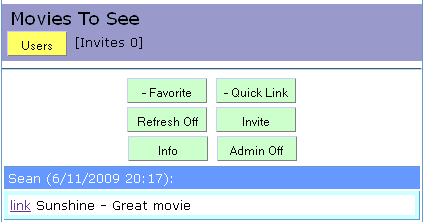Wow, that’s a mouthful far as titles go, but couldn’t think of a better way to say it. Now what I’m about to go through is the “system” I have found that works pretty well when it comes to structuring controllers knowing that there will be asynchronous operations. Why is that a big deal? Well where you put certain methods can depend on which controller actually owns the action.
When I started using MVC, I had some issues on figuring out how to build controllers so that they made sense from a structural point of view. I slightly touched on it but I wanted to show where I progressed to in the vain hope that I can help prevent stumbling on your part.
One thing to be noted is the asynchronous part. I’ve become a firm believer that MVC is pointless without asynchronous operations. Why? Simply put, you can use them or you can come up with some annoying post and redirect for any create, update, or delete operations. If you’re going to do that, you might as well just be institutionalized because you are one masochistic mother f—er. For everyone else in the happy world, go with something like jQuery that makes it real easy to perform said operations.
With the last paragraph in mind, the part I had trouble with the most was figuring out where the actions go. You see, when I started using MVC, I grouped stuff in an ultra simple manor. Say I have a site for handling pictures. Well there would be a view controller that would have anything to do with viewing images and an admin controller that took care of the uploading, changing, deleting, ecting. As you can imagine, this was not what you might call ideal.
Once I got a feeling for MVC and how it worked, I started having things a little more separated but still didn’t feel right. I had actions for viewing a list of images on the image controller no matter if public or admin side which wasn’t really ideal to me since it kind of blurred what was public and what was restricted from a conceptual point of view.
It wasn’t until I started thinking in terms of unit testing that it started to make more sense. If I were creating controllers as if they were classes instead of pages like with WebForms, maybe it would work out better. Seems real profound right? Well it was at the time since I still had WebForms state of mind. All of a sudden, it made way more sense on how the controllers should be set up. In an odd way, the controllers almost became almost business layer like. If I wanted to update an Image, there would be an Update method on the image controller responsible for taking in the changes, validating, and dealing with the entity objects. Everything that had to do strictly with displaying information would be handled by a display controller like the before mentioned Admin controller. So something like:
As you can see, the Admin controller has something to show all users. The User controller has the methods for things like updating, creating, and validation. Basically anything that would change an image is on one controller. Anything for showing it on the main section controller. That is, a controller that embodies an overall concept like say an Admin section of a site or possibly a controller for viewing galleries.
The sequence of events (bad word choice…) would be something like:
Open Admin/UserList/
Admin controller uses User Entity to retrieve list
Admin View shows User List
User clicks delete button/link on Admin View
Javascript/jQuery method invoked to send id to User/Delete
User controller receives id
User controller validates id to make sure it is valid
User controller validates current user to see if allowed to delete
User entity Delete method invoked by User Controller
Result of Delete Method is returned by User Controller (JSon preferably)
Admin View displays the result
Treating controllers like classes (and the use of anonymous actions) allows a very clean separation of actions resulting in a nice logical layout. Beyond this, it also allows for a greater separation between controllers which means its possible to do multiple parts of the entire project in parallel.
Maybe this is just stating the obvious, something I’m pretty good at, but my hope was to give a quick over view of laying out controllers for those who are just starting out.


